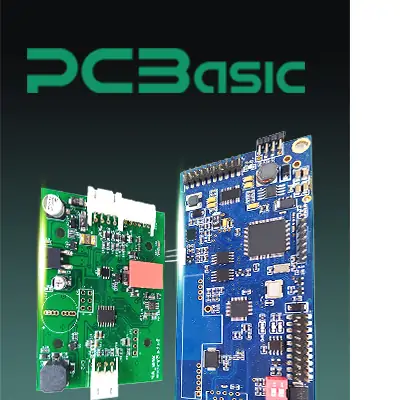

Global high-mix volume high-speed PCBA manufacturer
9:00 -18:00, Mon. - Fri. (GMT+8)
9:00 -12:00, Sat. (GMT+8)
(Except Chinese public holidays)


Global high-mix volume high-speed PCBA manufacturer
9:00 -18:00, Mon. - Fri. (GMT+8)
9:00 -12:00, Sat. (GMT+8)
(Except Chinese public holidays)
HomePage > Blog > Knowledge Base > Clipper Circuit Explained: Types, Diagrams, and Applications
In electronic circuits, we often need to control the voltage to prevent signals from being too high or too low. At this time, the clipper circuit is used. Its function is to "clip" the unnecessary parts of a signal and keep the waveform within an appropriate range. For example, a positive clipper will remove the positive half of the signal, while a negative clipper will remove the negative half. Understanding these principles helps us design more stable circuits.
This article will tell you what a clipper circuit is and, combined with clear clipper circuit diagrams, introduce various types of clipper circuits and their practical uses.
A clipper circuit is a kind of circuit used to "clip" the parts with excessively high or low voltages, without changing the other parts of the signal. This kind of circuit usually uses diodes to control the output waveform and is often used in signal processing and voltage regulation. Unlike a limiter, a clipper circuit will completely remove the signal that directly exceeds the set range. So, what is a clipper? Simply put, it's actually a simple way to control voltage that can protect electronic components or make signals more standard.
The clipper circuit is a kind of circuit used to "clip off" parts with excessively high or low voltage. It mainly uses diodes, and sometimes bias voltages, to control the signal from exceeding a set voltage level, preventing the voltage from being too high and affecting the following circuits.
When a signal enters the circuit, the diode in the clipper circuit responds depending on the direction of the voltage:
• If the voltage direction makes the diode conduct (forward-biased), current flows through the diode to ground or the bias voltage, and that part of the signal gets “clipped.”
• If the voltage direction makes the diode not conduct (reverse-biased), the signal passes through normally and is not clipped.
By adjusting the direction of the diode and setting different bias voltages, the circuit can be made to clip just the positive half, the negative half, or both sides of the signal. Finally, the clipper circuit will remove the signals that exceed the range, making the output waveform more regular, thereby achieving the purposes of signal shaping, voltage limiting, or protecting components.
Next, let's have an in-depth understanding of several common types of clipper circuits, including positive clipper, negative clipper, and combination clipper.
The function of the positive clipper is to "clip off" the voltage of the positive half of the input signal, that is, to limit it so that it does not go beyond a certain voltage level. This type of circuit is generally implemented by series or parallel connection of a diode, and there are mainly three common forms:
• Series Positive Clipper: A diode and a resistor are connected in series. When the input signal is positive, the diode is reverse-biased and doesn't conduct, which means clipping off this part of the current--so the positive voltage is cut clipped.
• Parallel Positive Clipper: The diode is connected in parallel with the resistor. When the signal is positive and exceeds a certain voltage, the diode conducts and diverts the extra voltage.
• Biased Positive Clipper: Adding a DC bias voltage to the circuit can make the clipping start above or below 0V for more precise control.
Positive Clipper Circuit Diagram:
This clipper circuit diagram shows how the diode blocks the positive voltage. It’s a standard positive series clipper configuration.
A negative clipper is a circuit used to "clip off" the negative half of the input voltage in a signal. Its basic idea is similar to a positive clipper circuit. Common types include:
• Series Negative Clipper: The diode is connected in series with the load, but in the opposite direction to the series positive clipper. It is used to block the negative voltage.
• Parallel Negative Clipper: A diode is connected in parallel in a circuit. When the voltage is negative and below a certain level, the diode conducts and leads this part of the voltage to ground.
• Biased Negative Clipper: With an added bias voltage, the negative clipper can start clipping below 0V, making the output easier to control.
Negative Clipper Circuit Diagram:
This clipper circuit diagram illustrates how the diode clips the negative part of the signal below a set level. It’s a common negative series clipper design.
This kind of circuit can simultaneously clip both the positive and negative halves of the signal, combining the functions of the positive and negative clipper.
• Dual Diode Clipper: Dual Diode Clipper: Two diodes in opposite directions are used. One is responsible for cutting off the positive peak, and the other for cutting off the negative peak.
• Biased Combination Clipper: By adding a bias voltage on the basis of a dual diode, the clipper voltage range can be controlled more accurately and is often used in signal processing and waveform adjustment.
 About PCBasic
About PCBasic
Time is money in your projects – and PCBasic gets it. PCBasic is a PCB assembly company that delivers fast, flawless results every time. Our comprehensive PCB assembly services include expert engineering support at every step, ensuring top quality in every board. As a leading PCB assembly manufacturer, we provide a one-stop solution that streamlines your supply chain. Partner with our advanced PCB prototype factory for quick turnarounds and superior results you can trust.
The application of clippers has become very common in various electronic systems, mainly including the following areas:
• Voltage protection: Prevents electronic components from being damaged by excessive voltage, commonly used in power supply circuits.
• Signal conditioning: Used in communication systems to limit and shape signals to meet processing requirements.
• Waveform shaping: Generates specific waveforms, such as square waves or pulses, in function generators or waveform control circuits.
• Noise elimination: Removes high-frequency spikes in audio or analog signal processing.
• Voltage regulation: Controls output voltage levels by clipping, ensuring downstream circuits operate within safe voltage ranges.
Whether it's a positive clipper, a negative clipper, or a combination of positive and negative clipper, each type of clipper circuit has its own specific use.
By learning different clipper circuit diagrams, you can control signal voltage more effectively and improve your circuit design. A proper diode clipper circuit not only protects your components but also improves signal quality.

Assembly Enquiry
Instant Quote
Phone contact

+86-755-27218592
In addition, we've prepared a Help Center. We recommend checking it before reaching out, as your question and its answer may already be clearly explained there.
Wechat Support

In addition, we've prepared a Help Center. We recommend checking it before reaching out, as your question and its answer may already be clearly explained there.
WhatsApp Support

In addition, we've prepared a Help Center. We recommend checking it before reaching out, as your question and its answer may already be clearly explained there.
